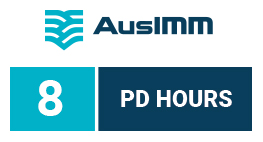Isatis.neo Fundamentals | Training course
Learn how to get started with Isatis.neo and quickly get to grips with software use.
Objective
- Be introduced to Isatis.neo functions for data analysis and estimation
- Understand how to get started with the software and quickly get to grips with its use
Application Domain
Isatis.neo is Geovariances’ comprehensive software solution in geostatistics. Designed for every business dealing with spatialized data, the software enables thorough data analysis and visualization, produces high-quality maps and models, and allows you to carry out extensive uncertainty and risk analyses that optimize your decision-making process.
Who should attend
Anyone wishing to gain the skills to start using Isatis.neo with confidence or learn more about the software’s many capabilities.
Course content
- Isatis.neo overview: user interface, 3D viewer, calculator (based on Python syntax), and automation workflow.
- Data import: points, block models, and wireframes.
- Data analysis: calculation of various statistical graphs, identification of outliers, anisotropies, trends, and variographical analysis.
- Estimation: kriging neighborhood analysis, kriging, cross-validation, and validation.
- Introduction to conditional simulations of numerical data.
Training Materials:
- Training licence of Isatis.neo geostatistical software will be attributed to the participants; as well as a typical facies dataset.
Prerequisites
This course is dedicated to practical exercises with Isatis.neo, and no theoretical reminders about geostatistics will be provided. Participants are, therefore, required to have a fundamental knowledge of geostatistics.


